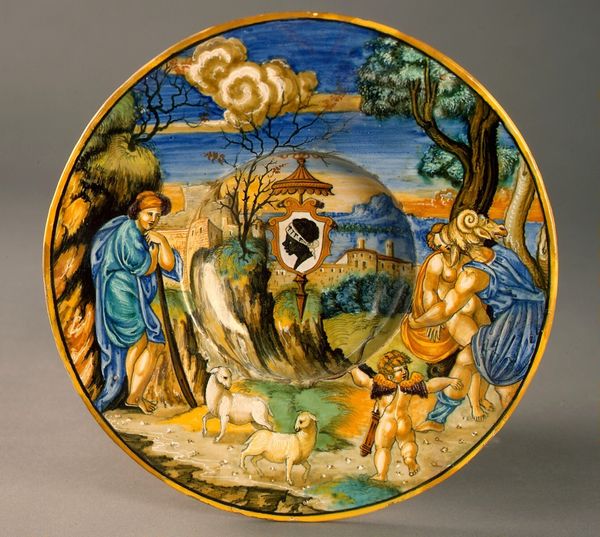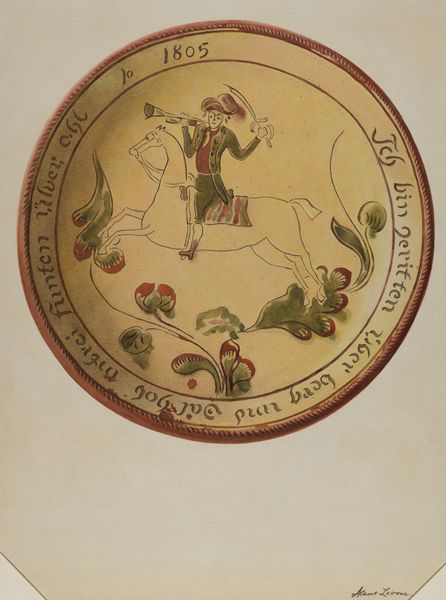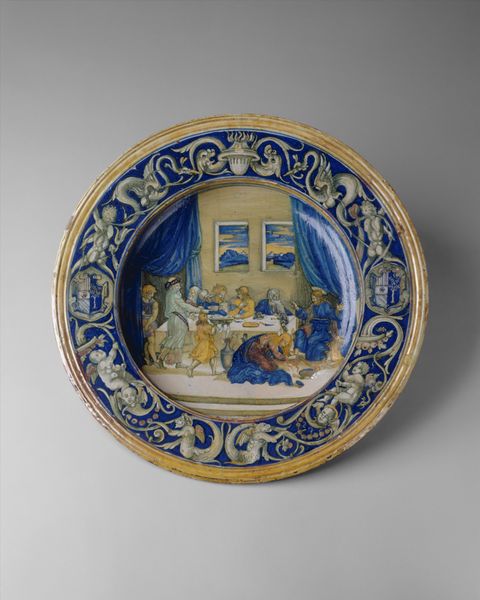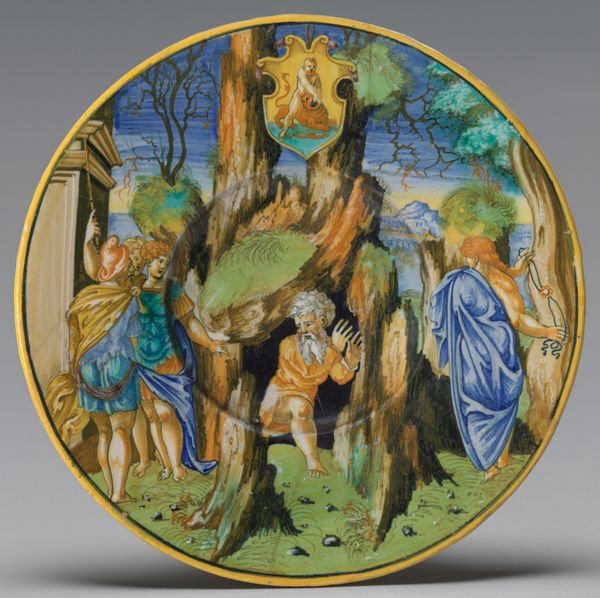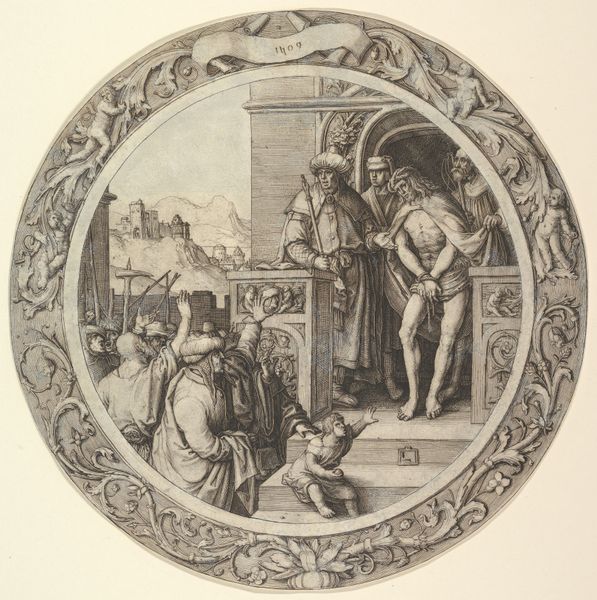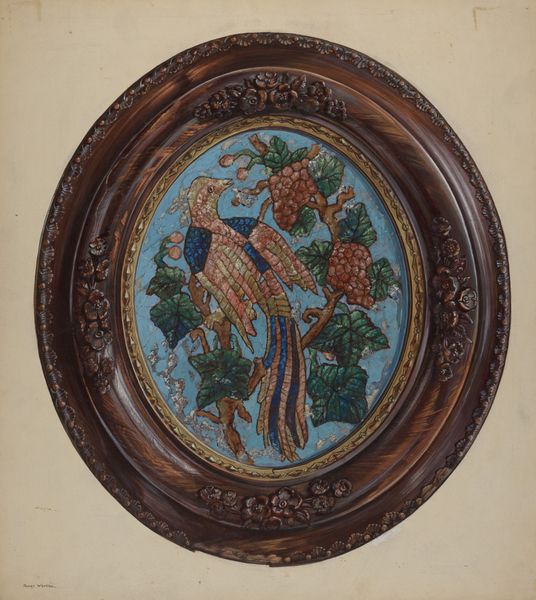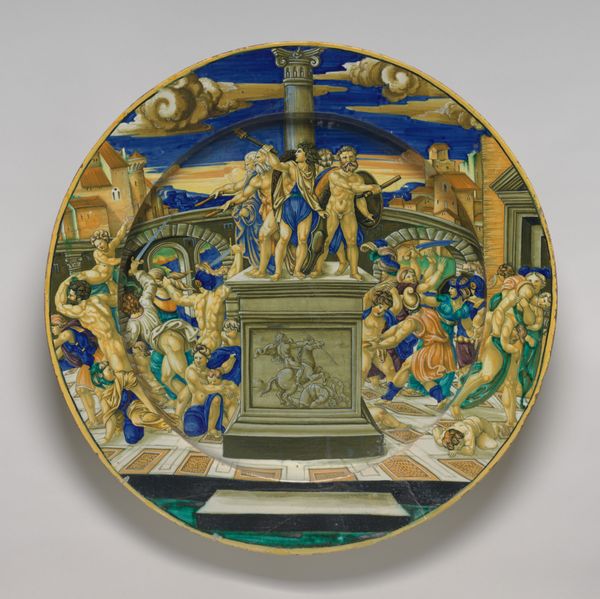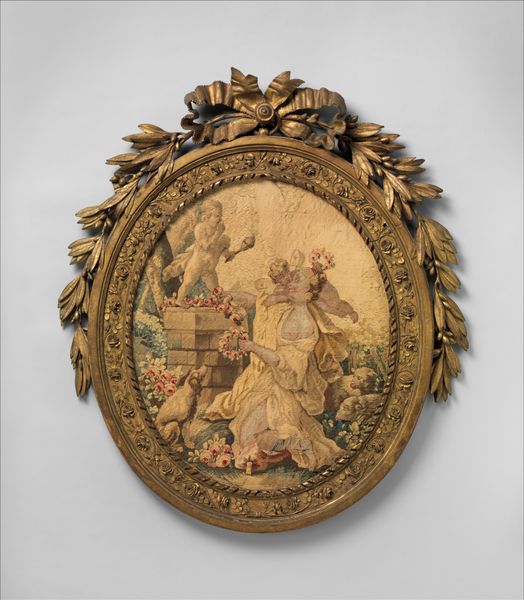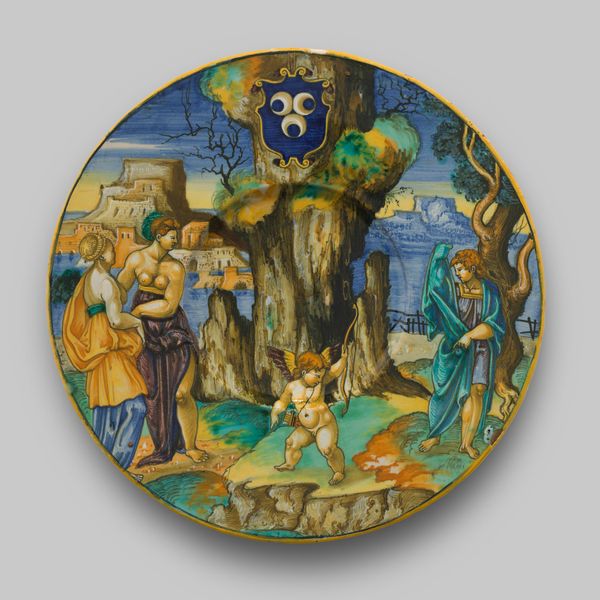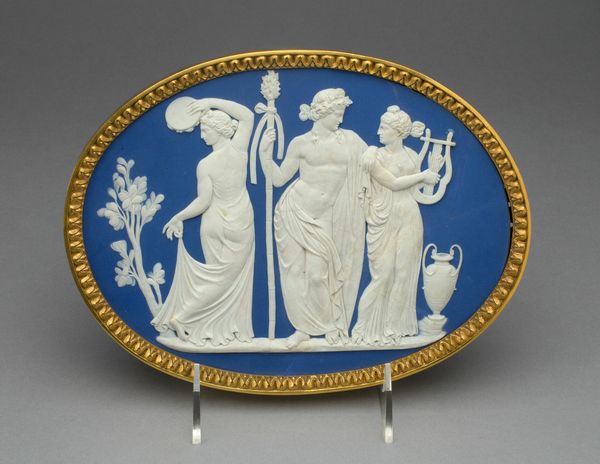
Madonna and Child with St. John the Baptist in Tondo c. 1520
0:00
0:00
relief, ceramic, earthenware
#
relief
#
ceramic
#
figuration
#
earthenware
#
earthenware
#
history-painting
#
decorative-art
#
italian-renaissance
#
italy
#
decorative art
Copyright: Public Domain
Curator: Looking at this piece, the cool glaze on the figures gives it a distinct sense of serenity. What catches your eye? Editor: I'm struck by the material itself; the high-relief ceramic makes the figures almost buoyant, and the round composition is really pleasing. Curator: This work, "Madonna and Child with St. John the Baptist in Tondo," attributed to Fra Mattia, or Marco Giovanni della Robbia, was created around 1520. It's a testament to the period’s fascination with classical forms and the integration of sacred imagery into everyday life. Editor: Tondo, meaning round, of course dictates the composition, forcing all of the symbolic narratives into a perfect, harmonious circle, the most complete and self-contained of geometric shapes. Curator: Exactly. The circular form can be seen as an embodiment of divinity. Mary's humility, expressed in her prayer, mirrors the deeper theme of divine incarnation, and the lush border seems to imply paradise. How does this iconography connect with period sensibilities? Editor: Well, the use of glazed earthenware provided a durability that plaster or fresco could not match, allowing for these religious themes to be household items of devotional and symbolic power for generations. I want to point out the detail: the faces express devotion with precision, even within such a constrained circular area. Curator: The glaze technique itself contributes to the reading. Notice how the light plays across Mary's white robe and creates a captivating tension between the tangible and the transcendent. And consider John the Baptist's inclusion – a visual foreshadowing of Christ's mission. He acts as the link between the Old and New Testaments. Editor: An interesting point about him serving as link! He also visually enlivens the earthly segment, along with other well-placed children figures. The use of negative space between each sculpted figure also feels particularly well managed, providing visual pauses within a rather ornate presentation. Curator: It's like a microcosm of Renaissance religious values expressed within a single ceramic round. Editor: Yes, each detail of medium, scale, and style are in harmony.
